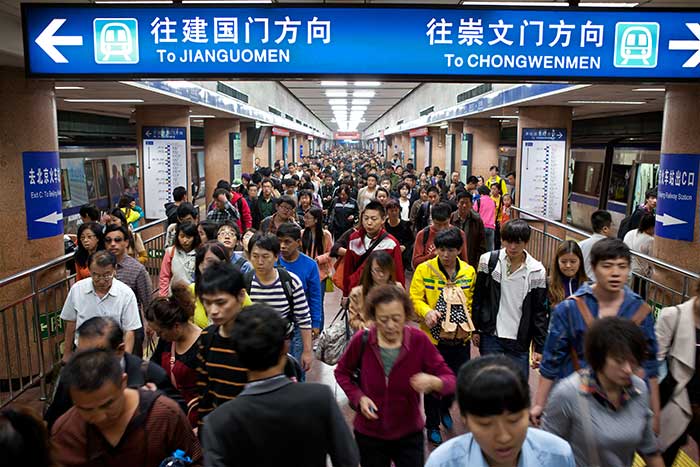The bank said higher external demand, rebounding commodity prices and domestic reforms mean the region will be the engine of the global economy in the coming years.
This is despite the fact that Asia-Pacific growth is expected to slow slightly this year and next, falling from 5.8% in 2016 to 5.7% in 2017 and 2018, according to a report published by the ADB today.
Yasuyuki Sawada, the bank’s chief economist, said the region is adjusting to a more consumption-driven economy in China and looming global risks.
However, he added: “While uncertain policy changes in advanced economies do pose a risk to the outlook, we feel that most economies are well positioned to weather potential short-term shocks.”
One risk highlighted by the bank was the possibility of further interest rate hikes in the US, which it warned could see money and assets flowing out of the region.
In particular, countries with flexible exchange rates would likely see a deeper depreciation in their currencies and higher inflation compared with those with controlled exchange rates.
However, the bank said the effects of this are likely to materialise gradually, giving governments in Asia-Pacific time to prepare.
Rising household debt in some Asian economies was also underscored as a threat to the region’s growth. The bank said governments could look at tightening debt-to-income ratios for loans, or may have to intervene more decisively in certain markets, such as housing, to cool speculative demand and guard against bubbles.
In the past year, a number of international observers including the OECD, Fitch Ratings and the International Monetary Fund have voiced fears around a worrying rise in corporate debt in China, one of the region’s most important economies.
In September last year, the Bank for International Settlements, a global financial watchdog, warned that China’s credit-to-GDP gap is now at three times the level it considers dangerous. Combined government, corporate and household dues stood at 255% of GDP in 2015.
At the same time, the country’s economy is struggling with a painful transition to a more sustainable growth model, centred on consumption and services rather than manufacturing.
While commended by the IMF and others as necessary, and good for China and the world, the move has shaved more than half a percentage point off growth since 2014, when the economy expanded by 7.4%.
And that figure is only expected to keep getting smaller. After 6.7% growth in 2016 – already China’s slowest rate since 1990 – the ADB said today it expects this to moderate further, to 6.5% this year and 6.2% in the next.
The country already lost its title as the world’s fastest growing major economy as a result last year. India has instead held the top spot since February 2016.
After a growth blip triggered by the country’s sudden and botched move to pull two of its most widely used notes from the economy, the ADB said India’s fast growth will resume, predicting 7.4% growth this year and 7.6% in the next.
“An array of important reforms has propelled India’s economic success in recent years,” said Sawada. “A continued commitment to reform – especially in the banking sector – will help India maintain its status as fastest growing major economy.”
South Asia as a whole remains the world’s most rapidly expanding sub-region. The ADB said growth will hit 7% in 2017 and 7.2% next year. South east Asian growth is also expected to accelerate, rising to 4.8% this year and 5% the year after, as commodity producers are boosted by recovering prices.
Central Asian economies will also be bolstered by the same factor, with the region growing 3.1% in 2017 and 3.5% in 2018, while countries in the Pacific will see 2.9% and 3.3% respectively.
The ADB’s report also discussed challenges faced exclusively by the region’s middle-income economies. It urged them to raise productivity with investments in innovation, education and infrastructure in order to advance to high-income status.














